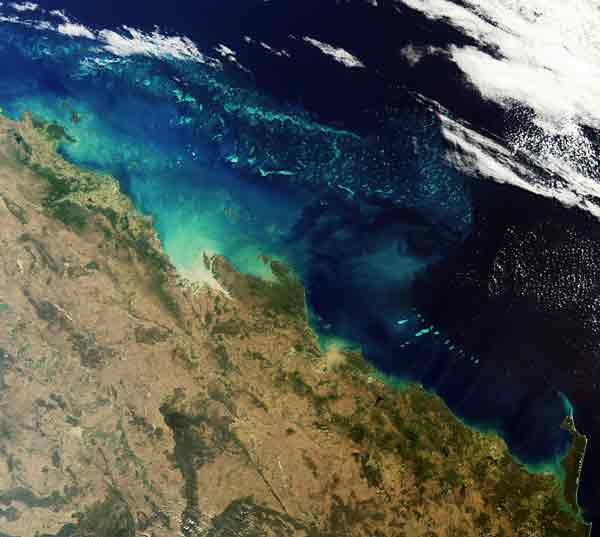
The World's Largest Living Structure

The Great Barrier Reef, the largest living structure in the world, can be seen in this image, taken on Nov. 8 by the European Space Agency's Envisat satellite.
The Great Barrier Reef is the world's most protected marine area and a World Heritage site . It is a system of about 3,000 individual reefs and 900 coral islands, which are divided by narrow passages, just beneath the surface of the Coral Sea.
The reef is as diverse as a rainforest, playing host to thousands of marine animals, including sharks, barracuda, turtles and some 1,500 different species of tropical fish.
The Great Barrier Reef spans roughly 1,243 miles (2,000 kilometers) and covers an area of some 135,136 square miles (350,000 square kilometers); it is the only living structure on Earth visible from space.
A reef this size builds up slowly for centuries. Today's Great Barrier Reef originated during the last Ice Age when water from melting ice inundated the edge of the continental shelf. It is believed to be built upon an earlier reef structure, which was discovered this past summer and dates back some 18,000 years.
Sign up for the Live Science daily newsletter now
Get the world’s most fascinating discoveries delivered straight to your inbox.











